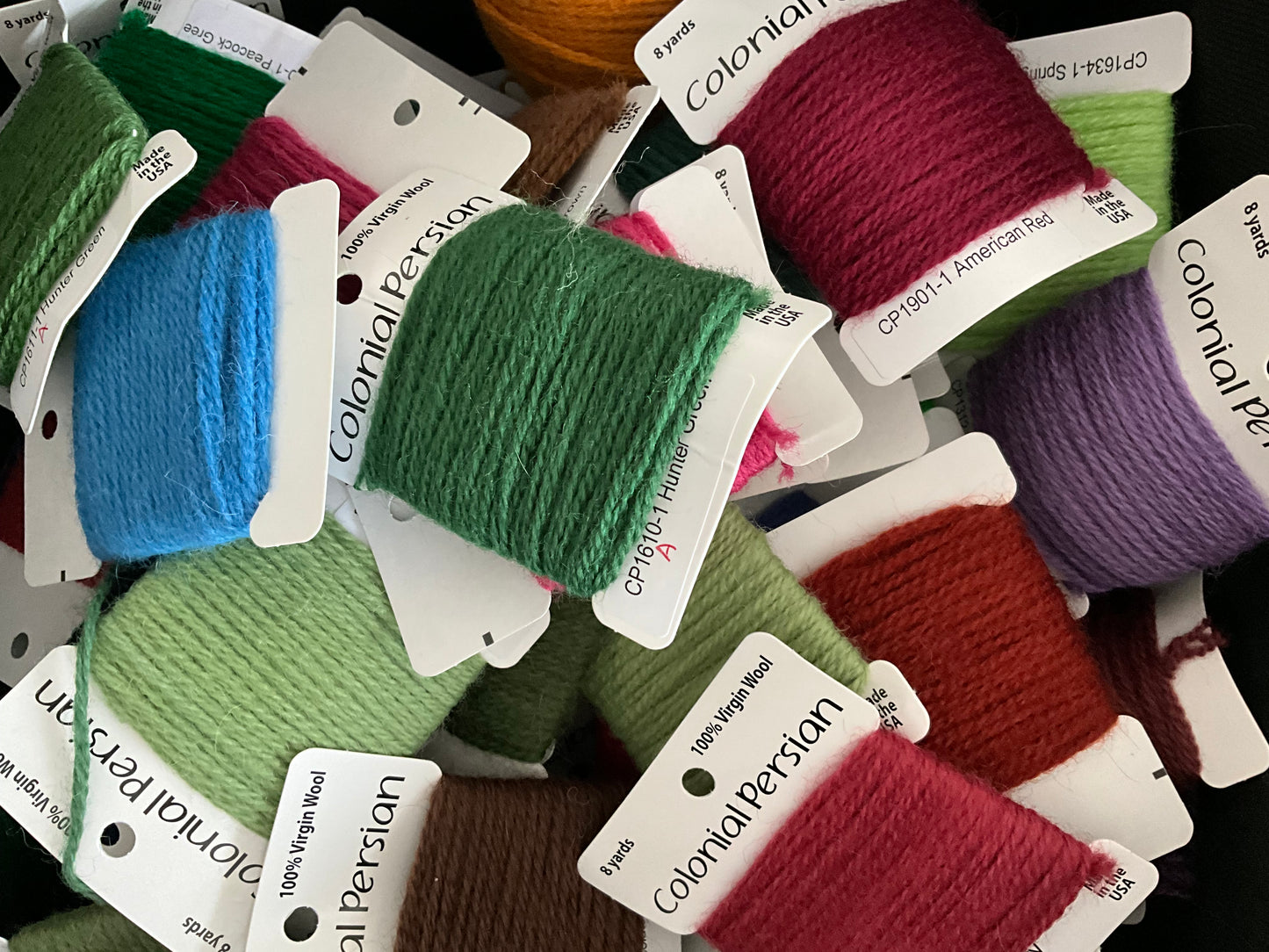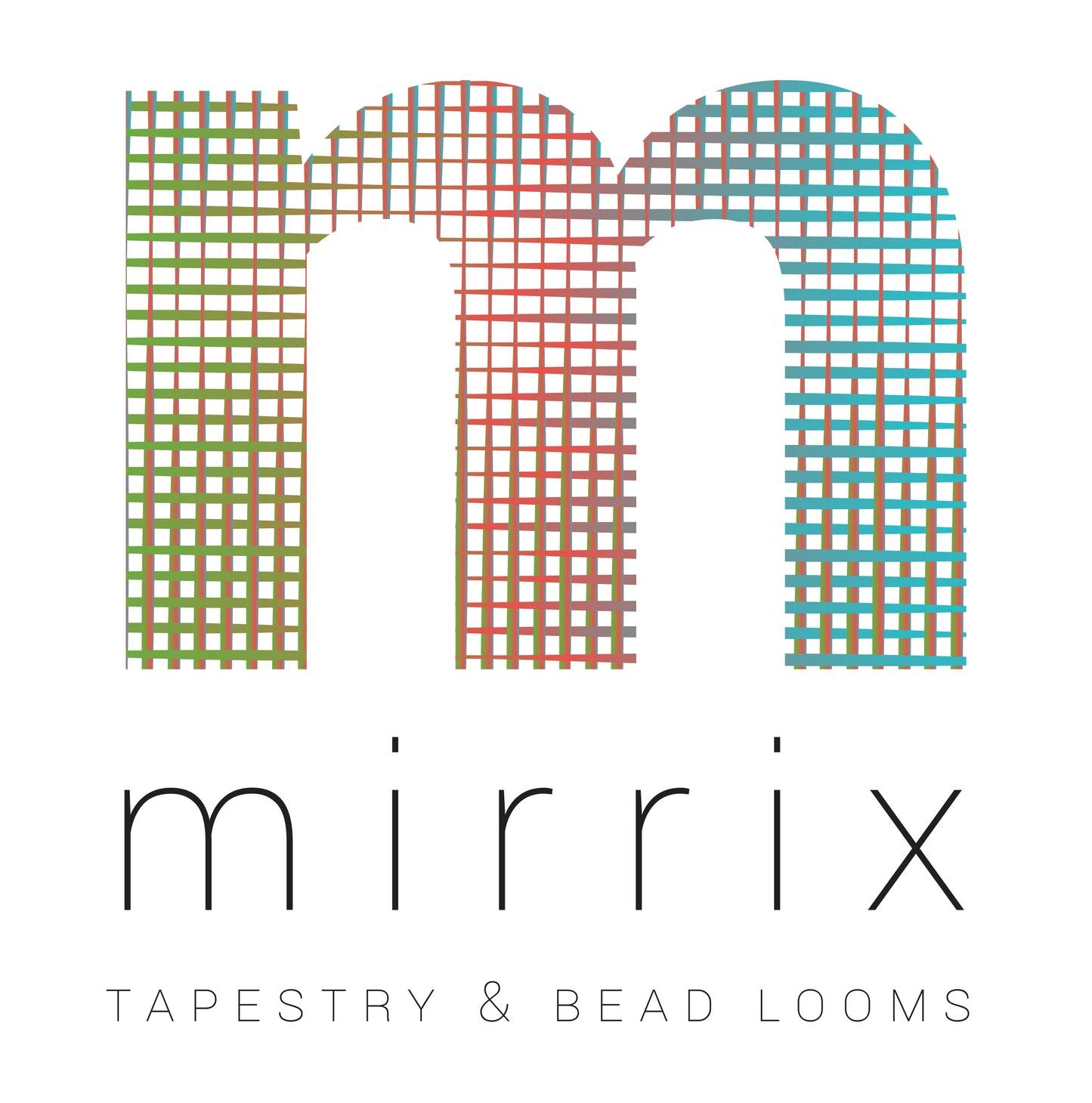
Paternayan yarn, the original Persian yarn, was developed by the Paternayan Brothers, Inc. in 1939. Starting in 1989 when it was first sold, Paternayan yarn went through a variety of owners before it was more recently purchased by Colonial Yarn. The same original 430 colors are still being produced.

Paternayan yarn is three ply but they are, as it is called, strandable which means the plies are not twisted together and are easily separated. For needlepoint, which this yarn was created for, it allows one to use the yarn on a variety of needlepoint canvases. Tapestry also is woven at different setts, so this yarn is a perfect companion for a tapestry loom. One can blend different colors, use just one or two strands, use all three strands. With those 430 colors there are so many blending options.

Paternayan yarn does not get fuzzy and does not fray. Since it can stand up to being sewn again and again through little holes, it can certainly stand up to the rigors of tapestry. It is made from long-staple virgin wool. There is no information on exactly what sheep it comes from. It has to be of the variety with long curly locks which are very shiny (this yarn glows) and long and strong.
I started my career of buying Persian yarn for more decades than I dare admit. I have great memories from my 20s of standing for a very long time in front of a wall of Persian wool, 430 colors hanging on little hooks. It was a shop in San Francisco. I had a motorcycle helmet in one hand, a back pack in the other and was wearing a leather motorcycle jacket because I had arrived on my Vespa steed. The store owner was not impressed. She kept a vigil on me the entire time and probably was shocked when I ended up buying a bunch of yarn instead of what? Sticking it in my backpack? Woman in their 20s just did not do needlepoint, or so it seemed. Especially ones carrying a motorcycle helmet and wearing a biker jacket!
I was reading an article about how needlepoint saw a revival during the pandemic. The artlice title was: “Not Your Grandmother’s Needlepoint.” It took me a few seconds to remember that I AM a grandmother and my needlepoint is nothing like my grandmother’s needlepoint. But my grandmother did not do needlepoint. My aunt did needlepoint. Her husband, an artist, painted the canvases for her. They were gorgeous. And so I never bought the canvas with designs painted on them. I made up my own designs. Eventually that bled into weaving and I stopped doing needlepoint for many decades picking it up again a few years ago mostly to play with my hand-painted silk.
It is not a stretch to use this really versatile and lovely yarn for tapestry. Because it can be sewn endlessly through the holes in needlepoint canvas, it is a perfect match for the rigors of tapestry.
Here you can find some of our color packages of Paternayan yarn.
Have you tried this yarn and would you like to see Mirrix carry more of it?






